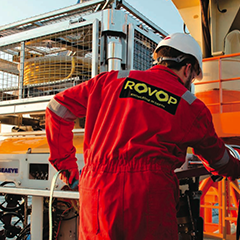With the challenges posed by developing wind farms offshore, the importance of having the right people for the right job has never been clearer. Steven Gray explains why choosing a Remotely Operated Vehicle (ROV) provider should not be clouded by one-dimensional thinking.
Unlike the hidden depths of oil and gas operations hundreds of miles out to sea, many people could be forgiven for thinking that the shallower waters typically faced in offshore wind developments would be easier to operate in.
Combatting high currents, wave impact and poor visibility in the first few metres of offshore wind projects however make for arguably much more challenging territory to work in compared with the deep, clear waters encountered thousands of metres below oil and gas assets.
Muddying the waters further in offshore renewables is the diverse composition of the seabed. Soft sand, rock formations, marine growth and even unexploded ordinance are among the varying elements that can be confronted in one project alone due to the nature of the offshore wind environment.
With ROV operations on the critical path, experience in knowing how to appraise and approach such complex conditions is crucial to successfully executing and delivering offshore wind projects.
Yet, in a relatively immature but extremely promising growth market – where cost and risk reduction have become the quintessential drivers – these crucial factors can often be overlooked.
As a consequence, rate based decisions can lead to project setbacks because of issues such as inexperienced personnel and inappropriate equipment being deployed on projects.
But vital lessons are being learned with proven specialist expertise – combined with oil and gas know-how which has been successfully adopted for offshore wind – becoming must-have credentials when awarding work to the supply chain.
Also central to robust and superior operations is ensuring the right technology and equipment for the job.



























